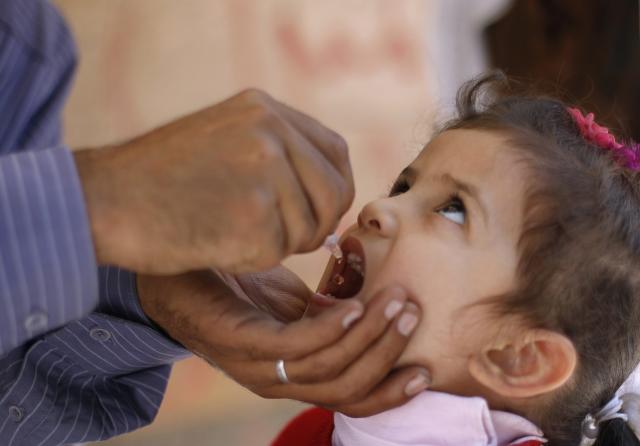The health benefits of vaccinations are extraordinary. According to the World Health Organization, vaccinations save the lives of 2-3 million people worldwide each year and prevent millions of others from suffering and disability. But what about the risk? What is the chance of something nasty happening to someone as a result of receiving a vaccination? Do we pay a price for the billions of vaccines that have been administered to humans worldwide? Vaccinations are not risk-free. However, the degree of risk is extremely small, both independent, and when measured against the phenomenal health benefits that vaccinations confer.
Let’s take a closer look at the meaning of risk and put the vaccine risk into context.
Every instant we are alive, every decision we make, every action we take has inherent risk. Do you drive a car? There is a 1 in 82 chance that you will die from a car accident over the course of your lifetime. Do you play tennis? Well, you face a 1 in 116,000 chance of dying from playing tennis. Do you cross the street? The lifetime risk of dying from crossing the street is 1 in 625. Have you considered that an asteroid may strike the earth and kill you? The lifetime risk that you will die from a catastrophic asteroid strike has been calculated to be 1 in 500,000.
Risk cannot be avoided, only reduced. When facing decisions in life, it is nonsensical and impossible to make a risk-free decision. Rather, one must decide on options where the benefits of a given decision best outweigh the associated risks. Driving a car at 200 km/hour without wearing a seat-belt is a risk that most of us would consider not worth taking. Strap on your seat-belt and drive within the speed limit and the risk declines sufficiently that the cost-benefit profile becomes acceptable. Whether we realize it or not, we go about our daily lives routinely deciding which risks are worth taking and which are not. Most of us are comfortable with the risk of walking across the street, or the risk of driving in a car. We are not comfortable, however, with the risks of leaving our toddlers at home alone or playing full-contact hockey without protective equipment.
So what are the risks of immunization, and to what extent should we consider the risks acceptable? The risk profiles for all of the approved vaccines are very similar, so for the sake of this discussion, let’s consider the DTaP (Diphtheria, Tetanus, and acellular Pertussis) vaccine for example. The CDC Vaccine Information Sheet for the DTaP vaccine shows that the risk for mild side-effects such as Fever or Redness/Swelling/Tenderness at the injection site is approximately 1 in 4. For every 4 people who receive DTaP, one will have a mild side-effect. Although very common, these side-effects are mild, transient, and without any meaningful consequence.
Moderate side effects are less common, but somewhat more concerning. High fever, febrile seizures, and temporary but inconsolable crying are examples of moderate side-effects from the DTaP vaccine. Though scary and upsetting to experience, these side-effects have no long-term impact on the health and well-being of the children receiving the vaccine. The risks of moderate side-effects from the DTaP vaccine run from 1 in 1,000 to about 1 in 15,000, the range of a typical person’s lifetime risk of drowning to death (keep in mind that most of us choose to go swimming periodically despite this risk).
Let’s now have a look at the risk of severe side-effects from DTaP. These are much more rare. For example, the risk of a life-threatening allergic reaction (anaphylaxis) to the DTaP vaccine is approximately 1 in 1 million. There are other possible severe side effects even more rare than anaphylaxis which include long-term seizures/coma and permanent brain damage. These events, however, are actually so rare that to date, researchers are unable to make an association between the occurrence of these events and the administration of the vaccine. In other words, it is entirely possible that these severe adverse events occurred coincidentally and were not at all related to the vaccination. It is fair to conclude, therefore, that the risks of a severe life/health-threatening side-effect of a vaccine are exquisitely low.
So to put the risk of vaccination in context: over your (or your child’s) lifetime, it is 16,500 times more likely that you will die from driving a car, 8.5 times more likely that you will die from playing tennis, and 1,600 times more likely that you will die from crossing the street than suffering a severe adverse reaction from receiving a typical immunization. And if these statistics were not compelling enough, consider that over your lifetime, you are at least 2 times more likely to die from a meteor crashing into earth than suffering a severe side-effect from receiving a vaccine.

Your Comments
If this doesn’t convince the world, nothing will.
Unless you don’t sign in as an MD.
The issue here is our ability to measure risk. People tend to take emotional decisions towards risks.
For example, it’s common to be scared of traveling by airplane, but uncommon to be scared of travelling by car. This is despite there being overwhelming evidence to support that air travel is safer.
This is partly because we are not experts in analysing risk. It is also partly because we are much more comfortable with risks that we feel in control of. The risk of dying in a vehicle is significantly under our own control, whereas the risk of dying in a plane crash is mostly outside our control.
And it is possible to avoid risks (not just mitigate them). You can avoid the risk of dying in a plane crash by never flying. The thing about vaccines is that it’s not a choice to do something or not, it’s the choice between accepting two different risks: the risks associated with the vaccine and the risks associated with the disease.